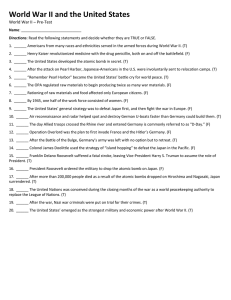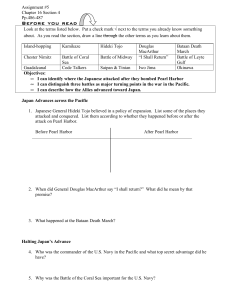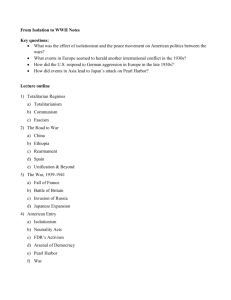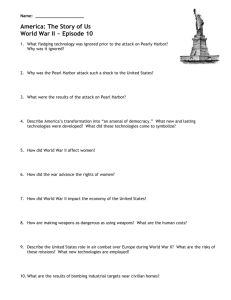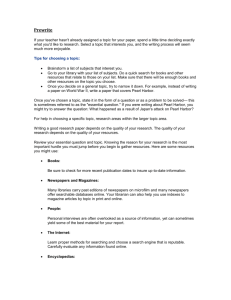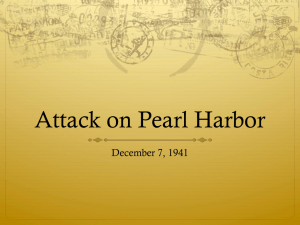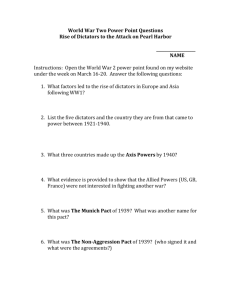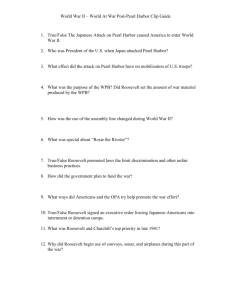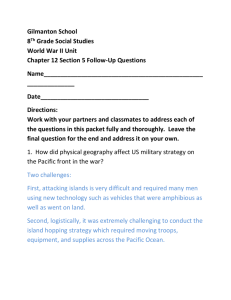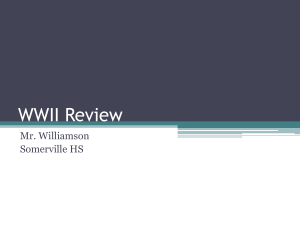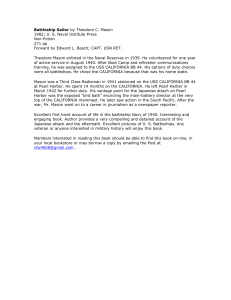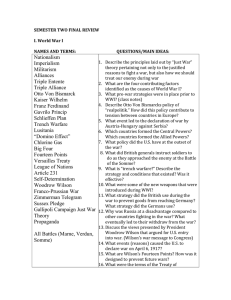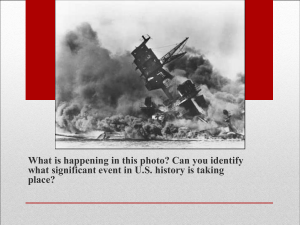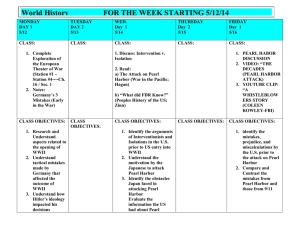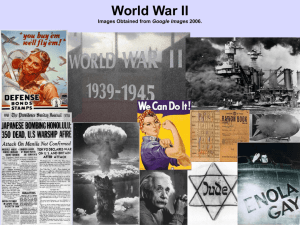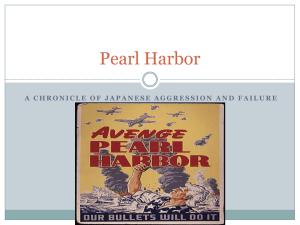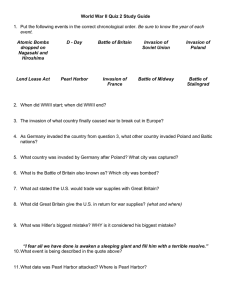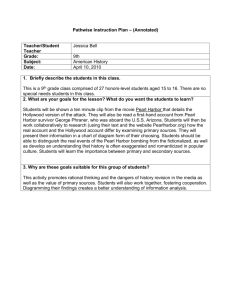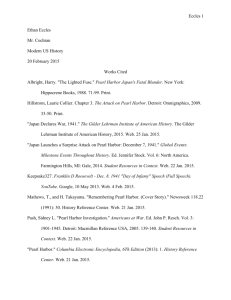What narratives can you identify
advertisement
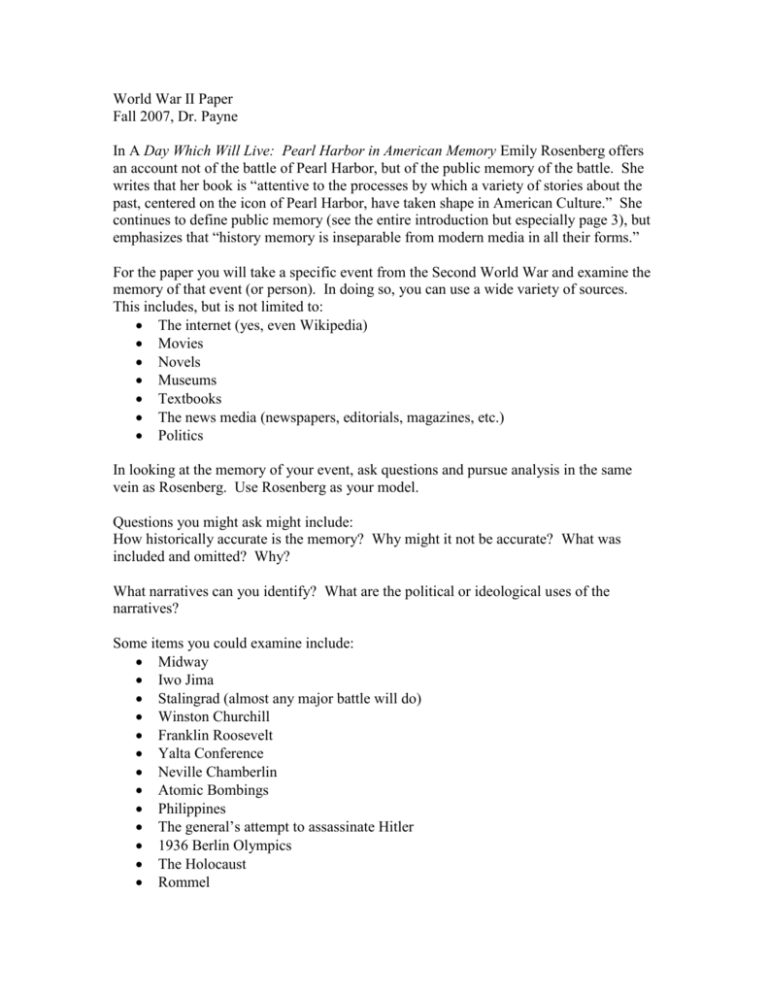
World War II Paper Fall 2007, Dr. Payne In A Day Which Will Live: Pearl Harbor in American Memory Emily Rosenberg offers an account not of the battle of Pearl Harbor, but of the public memory of the battle. She writes that her book is “attentive to the processes by which a variety of stories about the past, centered on the icon of Pearl Harbor, have taken shape in American Culture.” She continues to define public memory (see the entire introduction but especially page 3), but emphasizes that “history memory is inseparable from modern media in all their forms.” For the paper you will take a specific event from the Second World War and examine the memory of that event (or person). In doing so, you can use a wide variety of sources. This includes, but is not limited to: The internet (yes, even Wikipedia) Movies Novels Museums Textbooks The news media (newspapers, editorials, magazines, etc.) Politics In looking at the memory of your event, ask questions and pursue analysis in the same vein as Rosenberg. Use Rosenberg as your model. Questions you might ask might include: How historically accurate is the memory? Why might it not be accurate? What was included and omitted? Why? What narratives can you identify? What are the political or ideological uses of the narratives? Some items you could examine include: Midway Iwo Jima Stalingrad (almost any major battle will do) Winston Churchill Franklin Roosevelt Yalta Conference Neville Chamberlin Atomic Bombings Philippines The general’s attempt to assassinate Hitler 1936 Berlin Olympics The Holocaust Rommel Bismarck Rosie the Riveter Stalin This is just the beginning. You are free to pick another topic, but I must approve it.

